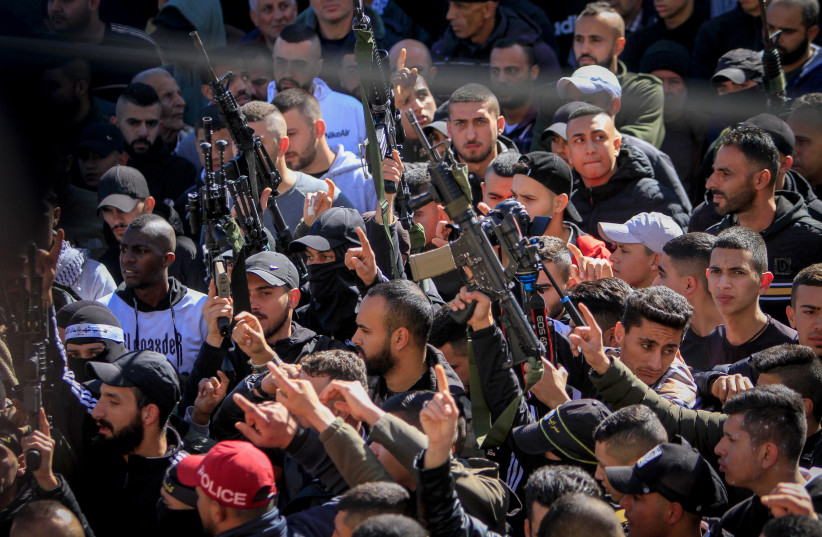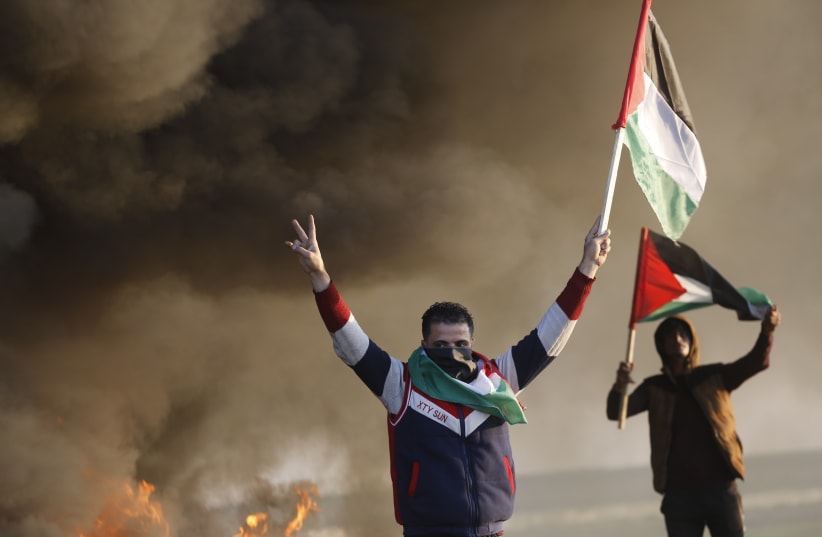The massive and intense firefight between the IDF and Palestinians in the Jenin refugee camp raises the question as to whether Israel has made progress in quelling the nearly 11-month-long waves of terrorism or is stuck in a quagmire and stalemate – or, perhaps, whether it may even lead to a broader war.
The operation itself only augments questions that already existed from past operations and recent year-end IDF reports.
On the one hand, the tactical goals of the mission appear to have been achieved.
The three Islamic Jihad terrorists being sought were all either killed or captured. At least nine Palestinians, all or nearly all firing on the IDF, were killed, with either zero or very limited loss of civilian life (in comparison to the massive size of the multisided firefight). Impressively, no soldiers were killed or wounded.
Also, at least one strategic goal was achieved.


Forest from the trees level
The Jerusalem Post has learned that looking with the perspective of distinguishing the “forest from the trees” – part of the current strategy of the IDF’s West Bank commanders is to bring the battle to terrorists’ home turf instead of waiting for them to bring it onto Israeli turf either in the West Bank or within the Green Line.
The idea is to minimize the number of Israelis who could be at risk of being killed and, hopefully, concurrently, that the broader Palestinian community will lose patience with the terrorists and demand quiet so that they can get back to their normal lives.
But bringing the fight to the Palestinian side is a double-edged sword.
Israeli optimists might say that Palestinians see how hopeless it is to fight with the IDF, and those who know the nine killed Palestinians will want to avoid a seemingly inevitable similar fate.
However, that is a rational calculus.
A more simplistic and less rational calculus could lead relatives and friends of the nine Palestinians to turn to terrorism, even if previously they were staying on the sidelines.
Put in mathematical terms: Before the operation, the IDF was worried about three terrorists; what if, afterward, there are 20-30 new terrorists acting out of personal fury and a desire for revenge?
Is that a win for Israel?
Of course, those supporting the IDF’s current aggressive approach could point out that when Israel followed a “hands-off” policy in early 2022, terrorism multiplied every time Palestinians saw one of their brethren succeed in an attack on Israelis.
So supporters of the IDF’s current aggressive posture could say there is no way to predict exactly what will inspire more terrorists, but at least taking the fight to the terrorists keeps them away from Israeli civilians.
All of this is based on analyzing the ongoing trends through the veil of Thursday’s battle in Jenin.
What about the broader story by annual numbers?
Last month, the IDF released its 2022 report, which said 2022 saw 7,589 rock-throwing incidents – up from 5,532 in 2021, 4,002 in 2020 and 3,805 in 2019.
In addition, there were 1,268 Molotov cocktail incidents, up from 1,022 in 2021, 751 in 2020 and 839 in 2019.
Most dangerous were the 285 shooting incidents, up from 61 in 2021, 31 in 2020 and 19 in 2019.
This picture portrayed violence from the West Bank as having escalated in 2022 – not only at the low-grade mass-protest-riot level, but also using deadly weapons.
There were 31 Israelis killed, compared with five, three and four in 2019, 2020 and 2021, respectively.
All of this sounds like the IDF and Israel have lost control in 2022. But the IDF want us to look at trends in arrest numbers.
Breaking down the arrests of Palestinians by month, the high for the year was 411 in March, which was the start of the ongoing series of waves of terrorism of 2022, with 336 in August, in parallel to Operation Breaking Dawn with Gaza, but down to the 200s in recent months and down to 170 in December.
According to IDF sources, fewer arrests did not mean the IDF got weaker, but rather that the end of 2022 showed the IDF putting terrorists more on the run, with fewer Palestinians involved in terrorist actions or plots, thus requiring fewer IDF arrest operations. Recently, the IDF even returned three battalions to other places in the country that had been temporarily added to help with the West Bank uproar.
If the IDF is right about this, some of the turnaround would not only be because of aggressive IDF dives into Palestinian areas to arrest and kill terrorists, but also from ongoing progress toward 50 km. of new sensors to the West Bank security barrier being installed, with a completion target date of the end of 2023.
But again, all of this is treating the situation in the West Bank as a sort of linear story operating in a vacuum.
After the Jenin battle, the Palestinian Authority is again threatening to cut off all security coordination with Israel.
Hamas and Islamic Jihad are both threatening revenge, leading southern Israeli communities to preemptively cancel public events, lest they be caught unprotected as rocket fire breaks out.
If either of these dramatic changes takes place, the Jenin operation will be looked back on as a small-minded move in a bigger and more complex chess game.
The PA may back down, or it may only briefly pause the security coordination with Israel.
Gaza’s terrorist rulers may also back down from starting a bigger war because they are still licking their wounds from the beating the IDF gave them in May 2021 and August 2022.
But nearly all Israeli intelligence officials say the 2014, 2021 and 2022 Gaza conflicts were all unintentional from both the Israeli and Palestinian sides.
Even if Thursday’s Jenin operation does not lead to an overreaction on the Palestinian side this week, it could bring the PA, Hamas and Islamic Jihad all months or years closer to the next conflict – when their anger boils over and overpowers their fear.
What this means is that any time Israel undertakes a major operation, it cannot just consider the success of an operation in a sterile vacuum about whether the specific mission makes sense in the latest of the short-term weekly events, but whether the mission makes sense, taking into account a period of months and years.
